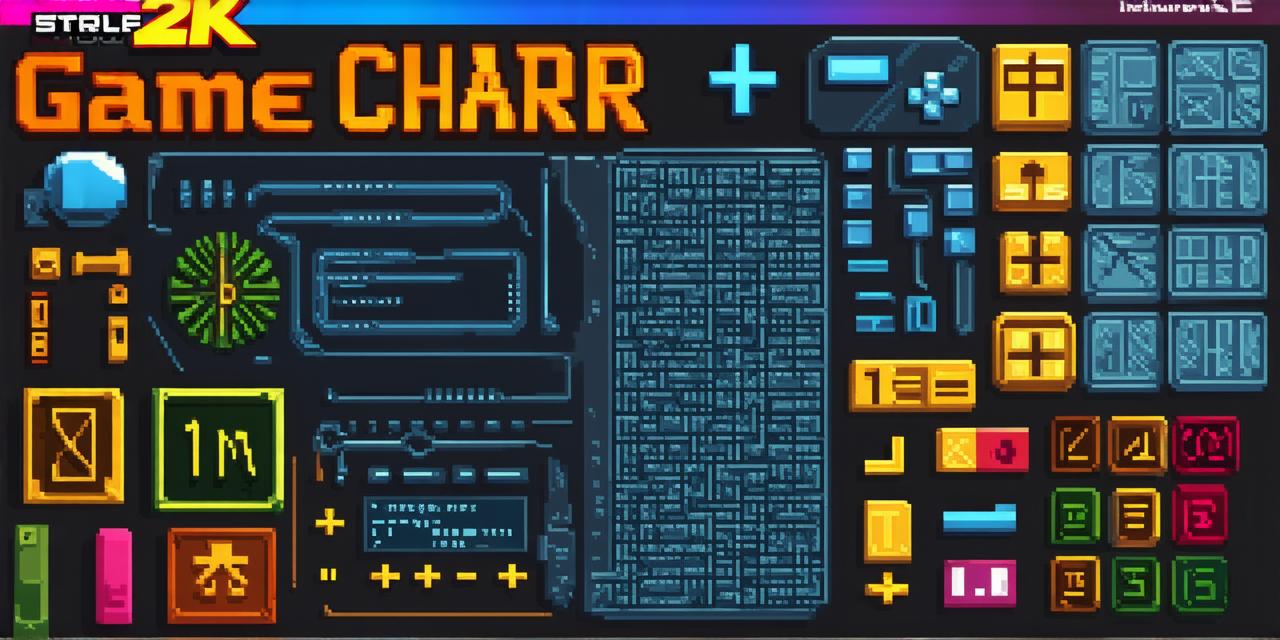Here’s the corrected HTML code for the article:
Introduction
Developing a video game is an exciting and challenging task that requires creativity, technical skills, and patience. Whether you’re a beginner or an experienced game developer, this step-by-step guide will help you navigate the process of creating your own video game. In this article, we will cover the key steps involved in developing a video game, including market research, conceptualization, prototyping, programming, testing, and publishing. We’ll also discuss best practices for each step and share some real-life examples to illustrate the points being made.
Step 1: Market Research
Before you start developing your video game, it’s important to conduct market research to understand your target audience and identify any gaps in the market. This will help you create a game that resonates with players and stands out from the competition. Some of the key questions to ask during this phase include:
- Who is your target audience?
- What kind of games do they like to play?
- What are their pain points and unmet needs?
- What platforms will you be developing for (e.g., consoles, mobile devices)?
- Who are your competitors and what are they doing well?
By answering these questions, you can gain valuable insights into the market and develop a game that meets the needs of your target audience.
Step 2: Conceptualization
Once you have conducted market research and identified your target audience, it’s time to start conceptualizing your video game. This involves brainstorming ideas for the game mechanics, storyline, characters, and visual style. Some of the key questions to ask during this phase include:
- What kind of gameplay mechanics will you be using? (e.g., platformer, first-person shooter, strategy)
- What is the overall narrative of your game?
- Who are the main characters and what are their motivations?
- How will players progress through the game?
- What kind of visual style will your game have?
By answering these questions, you can create a solid foundation for your game and ensure that it’s engaging and immersive for players.
Step 3: Prototyping
Once you have a solid concept for your video game, it’s time to start prototyping. This involves creating a basic version of the game mechanics and visual style to test with potential players and iterate on the design. Some of the key questions to ask during this phase include:

- What are the core gameplay mechanics that you want to include?
- What kind of user interface will your game have?
- How will you test your prototype with players?
- What feedback will you be looking for from players?
- How will you incorporate player feedback into your design process?
By answering these questions, you can create a functional prototype that allows you to test different aspects of the game and refine the design based on player feedback.
Step 4: Programming
Once your prototype is complete, it’s time to start programming. This involves writing code to implement the game mechanics and visual elements. Some of the key questions to ask during this phase include:
- What programming languages and tools will you be using? (e.g., C++, Unity, Unreal Engine)
- How will you structure your codebase to make it easy to maintain and extend?
- What kind of debugging and testing tools will you be using?
- How will you optimize your code for performance?
- How will you ensure that your game is cross-platform compatible?
By answering these questions, you can create a solid foundation for your game’s technical side and ensure that it runs smoothly on all target platforms.
Step 5: Testing
Once your game is programmed, it’s time to start testing it thoroughly to ensure that it’s bug-free and runs smoothly. Some of the key questions to ask during this phase include:
- What kind of testing will you be doing? (e.g., unit testing, integration testing, system testing)
- How will you identify and fix bugs in your code?
- How will you optimize your game’s performance?
- How will you ensure that your game is accessible to all players, including those with disabilities?
- How will you balance the difficulty of your game to make it challenging but not frustrating for players?
By answering these questions, you can create a stable and polished version of your game that provides a great user experience.
Step 6: Publishing
Once your game is complete and thoroughly tested, it’s time to start publishing it on the target platforms. Some of the key questions to ask during this phase include:
- What platforms will you be distributing your game on? (e.g., consoles, mobile devices, PC)
- How will you price your game?
- How will you market your game to attract players?
- How will you handle updates and bug fixes for your game?
- How will you monetize your game (e.g., through ads, in-app purchases, subscriptions)?
By answering these questions, you can create a successful launch strategy for your game and ensure that it reaches as many players as possible.
Summary
Developing a video game is a complex and challenging task that requires creativity, technical skills, and patience. By following these six key steps, you can create a successful game that meets the needs of your target audience and stands out from the competition. Whether you’re a beginner or an experienced game developer, this guide will help you navigate the process of creating your own video game. With perseverance and hard work, you can bring your vision to life and create a truly immersive and engaging experience for players.



